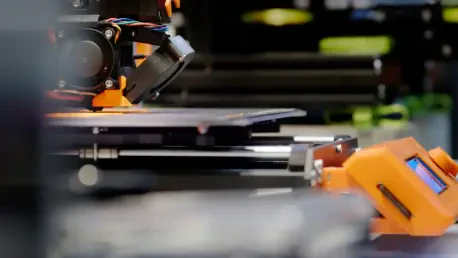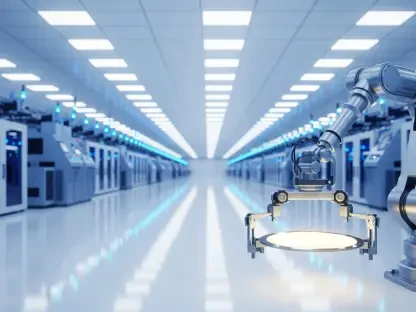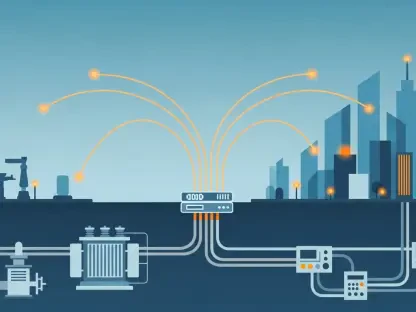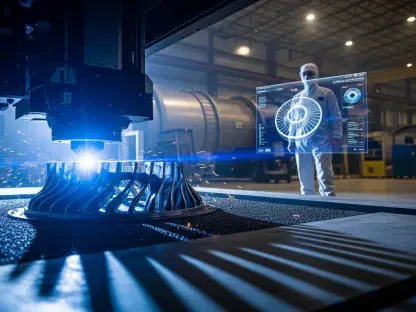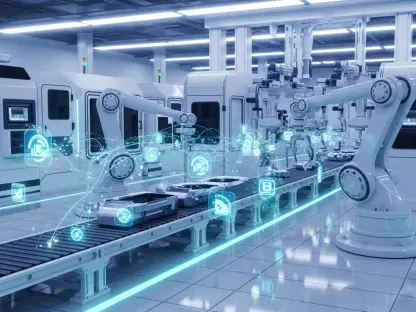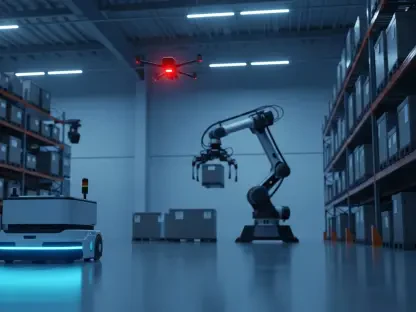Additive manufacturing, often heralded as the next major shift in industrial processes, has moved beyond experimental stages to real-world applications transforming multiple sectors. At the recent Additive Manufacturing Users Group’s (AMUG) annual technical competition in Chicago, innovators showcased how this technology is reshaping industries including aerospace, automotive, and healthcare. As participants demonstrated, additive manufacturing is no longer seen as just a novel method; it is increasingly becoming the backbone of industrial progress, addressing complex challenges and opening new avenues for efficiency and scalability.
Aerospace advancements
A significant leap in aerospace technology is being driven by additive manufacturing, which offers a solution to age-old challenges of mass reduction without sacrificing structural integrity. An exemplary demonstration can be seen in Ryan Watkins’ project at NASA’s Jet Propulsion Laboratory, which won the Advanced Finishing award. His initiative focused on the “Mars Sample Return Crush Lattices” project. Utilizing a chemical polishing process, his team managed to reduce the thickness of ligaments by over 80%, which is crucial for keeping components light yet robust for space missions. This application of additive manufacturing stands as a testament to its capability in meeting the rigorous demands of aerospace applications, where every gram counts and precision is non-negotiable.
The judges at the AMUG competition were particularly impressed by how well the project integrated advanced finishing techniques not just to meet aesthetic needs, but to also ensure structural efficiency and mission readiness. Watkins’ work illustrates that while traditional manufacturing often hits a wall with such demands, additive manufacturing easily overcomes it, offering innovative solutions to design problems that previously seemed insurmountable. The initiative not only shows promise for future space exploration missions but also highlights a broader trend of innovative design and materials used to meet specific requirements inherent in aerospace projects.
Automotive transformation
The automotive industry is also reaping the benefits of additive manufacturing, as evident in the innovations presented by Evan Butler-Jones in association with Equispheres Inc. and Martinrea International. Their Advanced Concepts-winning project involved integrating passive cooling systems directly into electric vehicle (EV) motor housings. This was achieved through the laser powder bed fusion process, which allowed the incorporation of a vapor chamber enabling both two-phase passive and liquid cooling.
This innovative approach significantly enhanced thermal management, thus reducing energy consumption by over 100%, a crucial development in the evolution of electric vehicles. By allowing the integration of advanced cooling systems within existing frameworks, Butler-Jones’ project underscored the potential of additive manufacturing to disrupt and improve traditional automotive design processes. It demonstrated that complex thermal management systems could be designed with precision and efficiency without the need for expansive redesign, highlighting how the technology enables the industry to keep pace with ever-increasing demands for energy efficiency and sustainability.
Across the automotive sector, additive manufacturing is becoming synonymous with innovation, offering manufacturers the ability to create highly efficient, complex systems that were previously unfeasible. By enhancing capabilities like thermal management without significant overhauls, these technologies suggest a broader shift toward more sustainable, adaptable automotive designs that meet the needs of today’s markets.
Healthcare innovation
In healthcare, additive manufacturing is playing a pivotal role in revolutionizing medical training and patient care. Luke Hileman’s Members’ Choice-winning project illustrated how advanced printing techniques can simulate critical medical procedures. The “Neonatal Thoracentesis Trainer” entry exemplified the profound impact of AM on medical training, providing a realistic simulation of a procedure essential for draining fluid from a neonate’s pleural space. This tool is crucial for ensuring that healthcare professionals can execute this life-saving skill with accuracy, reducing the risk of complications in pediatric care.
Applications such as Hileman’s have far-reaching implications for medical training and safety standards. By enabling precise procedural training, additive manufacturing bridges the gap between theory and practice, offering a risk-free environment where medical practitioners can hone their skills. This transformation signifies the beginning of more personalized and precise healthcare solutions, wherein customization based on specific needs becomes cost-effective and efficient, paving the way for advanced treatment protocols that can be tailored to individual patient requirements.
The use of AM in healthcare isn’t just limited to training tools; it extends to creating patient-specific implants and prosthetics, surgical guides, and even tissue engineering. This versatility highlights the transformative impact AM can have on patient outcomes and medical methodologies. It showcases an era where medical solutions are tailor-made, enhancing the precision and effectiveness of interventions across the board.
Diverse applications and competitive spirit
The AMUG Technical Competition was a showcase of the broad spectrum of possibilities that additive manufacturing can offer, underscoring its potential to revolutionize industries beyond traditional boundaries. The competition brought forward entries from both corporate entities and hobbyists, each illustrating how AM can innovate traditional processes and provide tangible solutions. Projects were judged on both creativity and technical prowess, highlighting the real-world impact that these advanced manufacturing techniques bring to the table.
This platform exhibited how diverse applications of AM can effectively address industry-specific challenges and yield practical results. Participants explored a range of possibilities, from aerospace and automotive to healthcare, emphasizing that AM is not the exclusive domain of any single sector. Instead, it is a tool ripe for exploration and optimization in multiple contexts. Products from Aaron Sherman of HellermannTyton and Brent Griffith of Labconco Corporation exemplified how diverse and unexpected applications like tabletop gaming models and advanced rock climbing grips were realized, pushing the envelope of additive manufacturing’s versatility.
The competitive spirit at the event also allowed for cross-industry exchange of ideas and techniques, encouraging participants to think outside traditional paradigms to foster creativity and innovation. By prioritizing projects that offered practical benefits, the competition reinforced additive manufacturing’s capability to drive change and operational enhancements, indicating its growing prevalence in evolving industrial landscapes globally.
Cross-category exploration
One of the standout aspects of the competition was the exploration of additive manufacturing’s cross-category capabilities, which provided insights into the technology’s flexibility and adaptability in diverse fields. This was highlighted by the recognition of projects that straddled multiple categories, demonstrating the interconnectivity of design, functionality, and innovation that AM can bring.
Luke Hileman’s endeavors in both healthcare and other categories accentuated the technology’s broad applicability, as did projects by Jacob Kallivayakik of Eaton Corporation on electric machines. These examples underscored AM’s capacity for driving forward progressive designs within existing structures, allowing for improvements without extensive reformation of current systems. The ability to seamlessly merge AM with various industrial needs speaks to its role not just as a disruptor but as a cohesive force that can streamline processes effectively.
Through such explorations across sectors, additive manufacturing is proving to be a holistic technology that connects disparate facets of production and design. It emphasizes a shift towards multidimensional development where enhancements in one sphere can catalyze advancements in another, fostering unprecedented collaborations. This trend of cross-industry exploration is redefining expectations within sectors, showing that the boundaries of design and function can be challenged continually to meet new demands.
Shared consensus on AM potential
Additive manufacturing, often hailed as a significant revolution in industrial processes, has transitioned from experimental stages to practical applications, transforming various sectors. At the recent Additive Manufacturing Users Group’s (AMUG) annual technical competition held in Chicago, innovators exhibited how this groundbreaking technology is reshaping industries such as aerospace, automotive, and healthcare. Participants demonstrated that additive manufacturing is no longer merely seen as an intriguing approach but is increasingly becoming integral to industrial advancement. It addresses intricate challenges and unlocks new opportunities for enhanced efficiency and scalability. As businesses adapt, incorporating additive manufacturing tools, they are finding increased flexibility, cost-effectiveness, and customization in production capabilities. This shift signifies a profound change, underscoring the critical role additive manufacturing plays in modernizing and optimizing industry operations to meet future demands.
